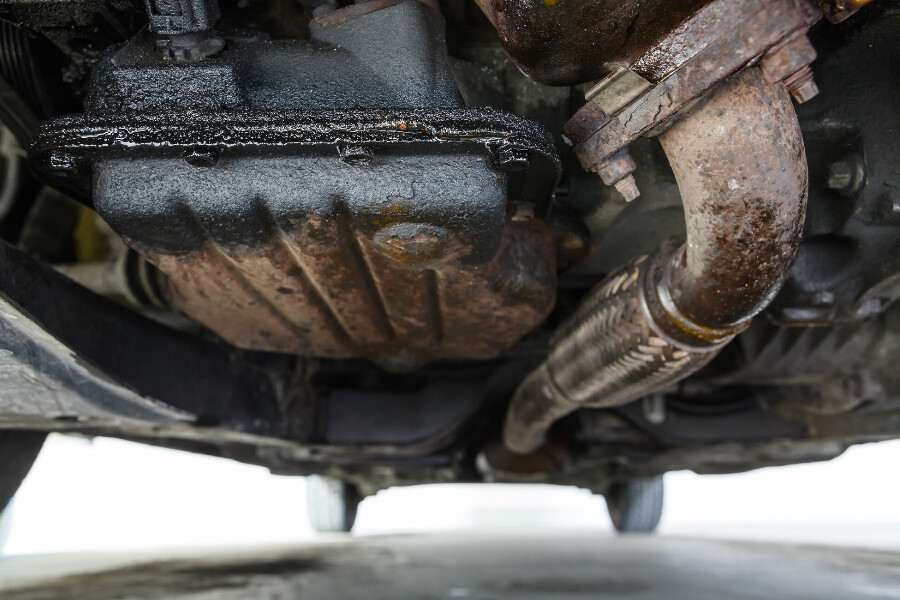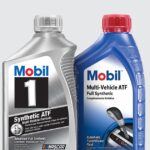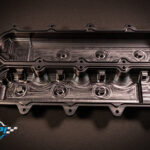
2001 Toyota Corolla Common Oil Leaks

Introduction
Oil leaks may seem like a small problem at first glance—just a few drops under your car, right? But when it comes to your Toyota Corolla (2001 model), those leaks can signal something more serious beneath the surface. A small leak today can become tomorrow’s blown gasket, overheating engine, or even full engine replacement.
This guide breaks down the most common oil leak issues for the 2001 Corolla, how to spot them early, how to fix them, and how to prevent them in the first place.
Why Oil Leaks Are a Big Deal
Ignoring an oil leak is like ignoring a toothache—it’ll only get worse. Oil is the lifeblood of your engine, and when it escapes, the engine components run hotter and wear faster.
- Reduced lubrication can cause metal parts to grind against each other.
- Overheating becomes more likely as friction increases.
- Repair costs climb fast when minor leaks turn into major problems.
Taking action early can save you hundreds, sometimes even thousands, of dollars.
Most Common Oil Leak Sources in a 2001 Toyota Corolla
1. Valve Cover Gasket
This gasket sits on top of your engine and seals the valve cover to prevent oil from leaking out. Over time, heat and pressure break it down.
Why it leaks: Rubber gaskets harden with age and lose their ability to keep a tight seal.
Signs of failure:
- Oil pooling around the top of the engine
- Burning oil smell after driving
- Slight smoke from the engine bay
A bad valve cover gasket is one of the most common and inexpensive oil leaks to fix on the Corolla.
2. Oil Pan Gasket
The oil pan is at the bottom of your engine, holding all the engine oil. Its gasket seals the pan against the engine block.
How it deteriorates: Road debris, age, and heat cycles can cause the gasket to crack or shrink.
Symptoms include:
- Oil puddles under the car (especially after parking overnight)
- Low oil levels
- Wet oil residue on the bottom of the engine
Since the oil pan sits low, it’s vulnerable to leaks and damage.
3. Front and Rear Main Seals
These seals sit at either end of the crankshaft, keeping oil inside the engine. When they wear out, leaks can get serious fast.
Why they leak: Natural wear, pressure build-up, or clogged PCV valves.
Early warning signs:
You may be interested in reading Toyota Corolla Gearbox Oil Leak: Causes, Fixes & Prevention
Toyota Corolla Gearbox Oil Leak: Causes, Fixes & Prevention- Oil dripping from the transmission bell housing
- Constant oil loss without visible engine leaks
- Oil smell inside the cabin
These seals are trickier and more expensive to replace because they’re harder to access.
4. Oil Filter Housing & O-Ring
The oil filter housing connects the oil filter to the engine. The O-ring keeps everything tightly sealed.
Common issue: The O-ring becomes brittle or flattened with time, causing oil to seep out.
How to detect it:
- Look for oil running down the side of the engine near the oil filter.
- Check for residue after oil changes.
A quick replacement of the O-ring often solves this issue.
5. Camshaft and Crankshaft Seals
These seals prevent oil from leaking where the camshaft and crankshaft exit the engine block.
How they contribute to leaks: Over time, they harden, shrink, or get damaged, leading to slow but steady oil loss.
Typical signs:
- Oil mist near timing covers
- Slow drips that worsen over time
- Difficulty pinpointing the leak location without a closer inspection
Warning Signs of an Oil Leak
Visible Oil Spots Under the Car
If you find dark, greasy spots where you parked, that’s a classic oil leak symptom.
Burning Oil Smell
A strong, burnt oil odor while driving usually means oil is dripping onto a hot engine component like the exhaust manifold.
Engine Smoke or Steam
If oil leaks onto hot parts, it can produce smoke—especially near the valve cover area.
Low Oil Levels
Checking your dipstick regularly can help you catch leaks before they become costly problems.
How to Diagnose the Leak
Step 1: Inspect the Engine Bay
Pop the hood and look for fresh oil around the valve cover, oil cap, or filter. A flashlight helps.
Step 2: Check the Undercarriage
Lay down (or use jack stands) to inspect the oil pan and transmission area for wet or dirty spots.
Step 3: Use UV Dye or Talcum Powder
Mechanics often use UV dye in the oil and a blacklight to find the source. A DIY option: sprinkle talcum powder to trace fresh oil flow.
You may be interested in reading Toyota Corolla Gearbox Oil Leak: Causes, Fixes & Prevention
Toyota Corolla Gearbox Oil Leak: Causes, Fixes & Prevention 2004 Toyota Corolla Oil Leak: Causes, Fixes & Prevention
2004 Toyota Corolla Oil Leak: Causes, Fixes & PreventionStep 4: Watch for Oil Consumption
If your oil level keeps dropping even when you don’t see leaks, suspect the main seals or internal engine issues.
Fixing the Most Common Leaks
DIY vs Professional Repair
Simple gasket or O-ring replacements can be done at home if you’re handy with tools. But deeper leaks—like crank seals or rear main seals—usually require professional help.
Valve Cover Gasket Replacement
- Remove the valve cover bolts
- Replace the old gasket with a new rubber one
- Torque bolts properly to prevent warping
This is often a quick and affordable fix.
Oil Pan Gasket Replacement
This job may involve removing the oil pan, cleaning the surfaces, and installing a new gasket or sealant. It’s a bit more labor-intensive but still manageable.
Main Seal Replacement (Front & Rear)
This requires removing the transmission or timing components, so it’s best left to an experienced mechanic.
Preventing Future Leaks
Regular Maintenance
Regular oil changes keep seals soft and clean, reducing wear.
Using the Right Oil
Using the oil grade recommended by the manufacturer helps reduce pressure and stress on seals.
Monitoring Seals and Gaskets
A quick visual inspection during oil changes can catch issues early.
Cost of Repair
- Valve Cover Gasket: $80–$200 (parts and labor)
- Oil Pan Gasket: $150–$400
- Main Seal Replacement: $500–$1,200
- O-Ring Replacement: $20–$80
These costs vary depending on whether you DIY or take it to a shop, but catching leaks early always costs less.
Final Thoughts
Oil leaks in a 2001 Toyota Corolla aren’t unusual—they’re practically a rite of passage for older cars. But they don’t have to spell disaster. Spotting leaks early, understanding where they come from, and addressing them promptly can keep your Corolla running smoothly for years to come.
Think of it like patching a roof. A small drip today can become a flooded attic tomorrow if you don’t act.
FAQs
1. How serious is a small oil leak on my Corolla?
Even small leaks can cause long-term damage if ignored. Seals can worsen, and oil levels can drop enough to damage the engine.
2. Can I drive with an oil leak?
Short distances might be fine if it’s minor, but it’s risky. Low oil can lead to engine failure, so repair it as soon as possible.
3. How do I know if it’s the valve cover gasket leaking?
Look for oil pooling around the top of the engine or a burning oil smell after driving.
4. Will thicker oil stop the leak?
Thicker oil might slow the leak temporarily but won’t fix the root cause. Replacing the bad gasket or seal is the only real solution.
5. How often should I check my oil level?
For older vehicles like a 2001 Corolla, check at least once a week or before long drives. This helps catch leaks before they become expensive repairs.
 Toyota Corolla Gearbox Oil Leak: Causes, Fixes & Prevention
Toyota Corolla Gearbox Oil Leak: Causes, Fixes & Prevention 2004 Toyota Corolla Oil Leak: Causes, Fixes & Prevention
2004 Toyota Corolla Oil Leak: Causes, Fixes & Prevention 2011 Toyota Corolla Oil Leak Problem: Causes, Fixes & Prevention Tips
2011 Toyota Corolla Oil Leak Problem: Causes, Fixes & Prevention TipsIf you want to know other articles similar to 2001 Toyota Corolla Common Oil Leaks you can visit the category Common Problems.
Deja una respuesta






More content of your interest